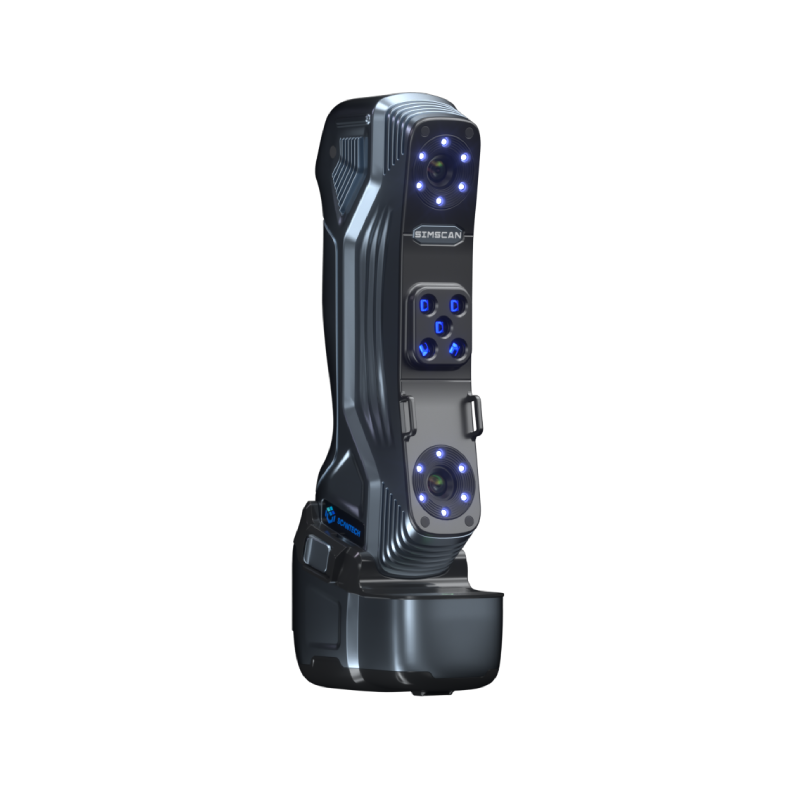Reviving the Past: SCANTECH's 3D Scanner Powers the China-Egypt Joint Archaeological Project
Beneath the golden sands of Saqqara, south of Cairo, lies a vast necropolis that once served as the sacred burial ground for the ancient capital of Memphis. This historic site has captivated archaeologists for decades, but recent excavations have brought unprecedented discoveries to light: mummified animals, ornately painted coffins, and stunning statues buried for millennia. In 2020, the global archaeological community recognized Saqqara as home to one of the year’s top ten most significant finds.

This surge of interest has led to a groundbreaking collaboration between China and Egypt—the Saqqara Digital Heritage Research Project. The mission of the project: to digitally preserve and study over a thousand elaborately carved anthropoid coffins discovered at the Bastet Temple site, develop a comprehensive heritage database, and contribute to the restoration of ancient Egyptian monuments.
High-Precision Scanning with 3DeVOK MT Professional 3D Scanner
SCANTECH's 3DeVOK MT professional 3D scanner, a cutting-edge instrument designed to capture fine details, colors and textures with non-contact, high-resolution scanning, was used to help the project team to meet the rigorous demands of archaeological digitization. The MT's advanced hybrid alignment system, which combines 34 blue laser lines, 22 infrared laser lines, and large-area infrared speckle projection, enabled archaeologists to perform efficient, precise scans without applying physical markers to fragile artifacts.

In two newly uncovered pyramid sites, SCANTECH's MT scanner was deployed to capture high-resolution digital replicas of monumental features including a pink granite false door, a black granite statue, and multiple anthropoid wooden coffins. These scans were carried out in complex field environments, demonstrating the MT's adaptability and ability to handle materials ranging from porous wood to polished stone.
With a basic accuracy of up to 0.04 mm and a resolution as fine as 0.05 mm, the MT 3D scanner provided not only detailed 3D geometry but also vivid color restoration. This allowed researchers to record not only the structure of the artifacts but also the subtle pigments and textures that are essential for historical interpretation and conservation.

Ultra-HD and Microwear Scanning in the Field
For the first time in Egyptian field archaeology, extreme high-definition (HD) and microwear scanning technologies were integrated into excavation workflows. These technologies allowed researchers to go beyond traditional visual analysis. They captured microscopic surface features—such as pigment stratification, engraving depth, and wear marks—that are often invisible to the naked eye.

SCANTECH’s MT 3D scanner played a central role in this process. With its exceptional resolution and accuracy, it preserved the full spectrum of each coffin’s physical characteristics—from sculpted contours to the delicate transitions between paint layers. These hyper-detailed scans form a vital digital archive that supports not only scholarly research but also conservation planning. By working with virtual models, restoration teams can simulate repairs, diagnose structural vulnerabilities, and develop targeted strategies—all while safeguarding the original artifacts from potential harm.
A Bridge Between Civilizations
Beyond the technical achievement, the project holds deeper cultural and academic significance. Through the lens of area studies and cross-cultural research, the collaboration showcases the complementary strengths of Chinese and Egyptian heritage conservation. It also highlights the role of digital technology as a bridge—one that connects ancient civilizations across geography and time.

Using SCANTECH's MT 3D scanner, the team produced accurate 3D models that will be incorporated into a digital database accessible to scholars worldwide. These models support interdisciplinary research in archaeology, history, material science, and museology, enriching our understanding of Egyptian civilization and China's contribution to global cultural heritage.
Commitment to Preservation
SCANTECH's non-contact 3D scanning process ensures that even the most delicate surfaces remain untouched. All scanning is performed with eye-safe light, preventing any potential photochemical damage to ancient pigments or materials. This precaution is vital when working with fragile wooden coffins and centuries-old painted surfaces.

Conclusion
As technology continues to evolve, the potential for high-resolution 3D scanning in heritage preservation grows exponentially. Projects like the China-Egypt Saqqara initiative demonstrate how SCANTECH's MT Professional 3D Scanner can transform archaeological practice—capturing, preserving, and sharing the wisdom of ancient civilizations with scientific precision and cultural sensitivity.
Through this collaboration, digital tools have become instruments of cultural diplomacy, enabling a new era of archaeological research grounded in mutual respect, innovation, and shared knowledge. SCANTECH is proud to play a key role in safeguarding history and promoting cross-cultural understanding—one scan at a time.

























 All Products
All Products 











 en
en 













